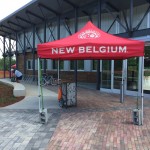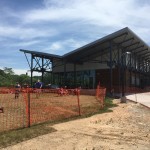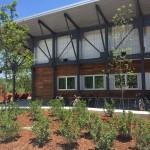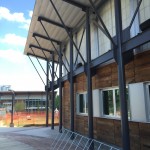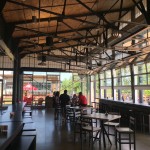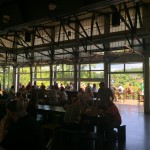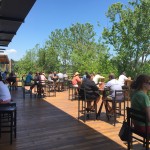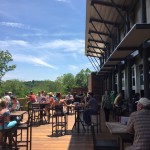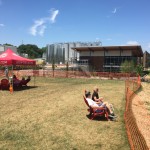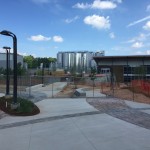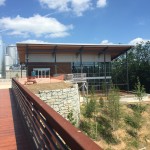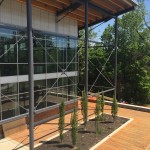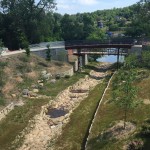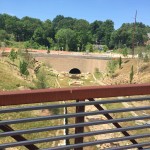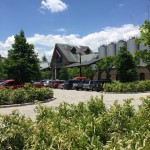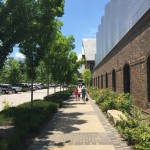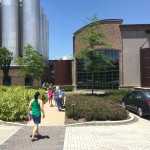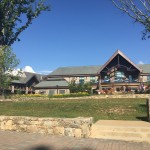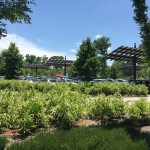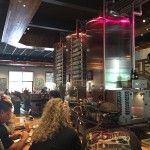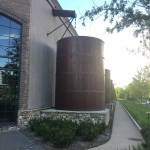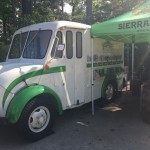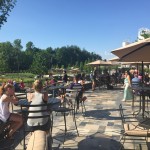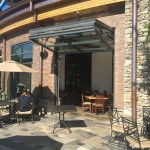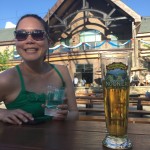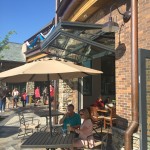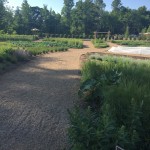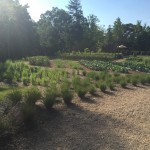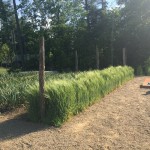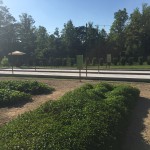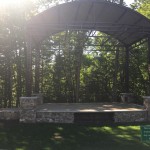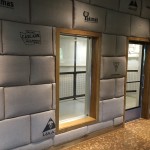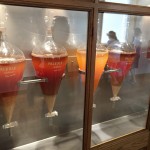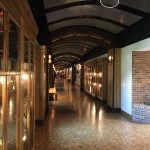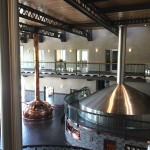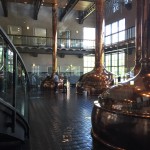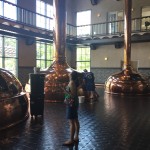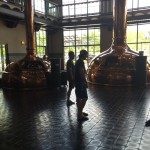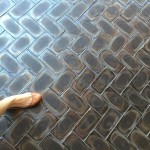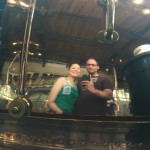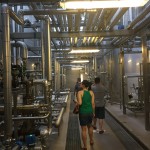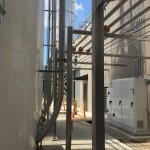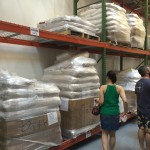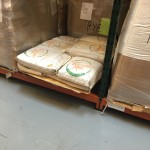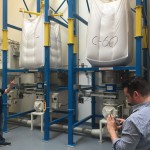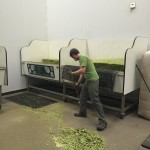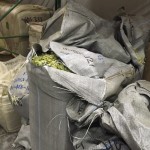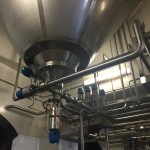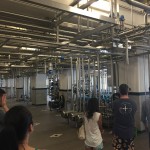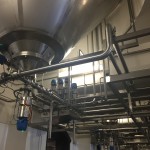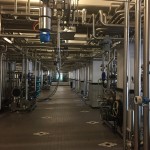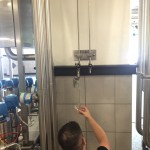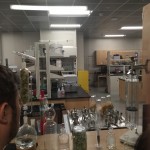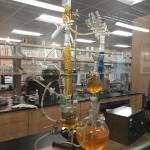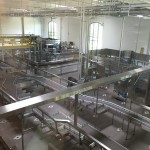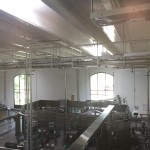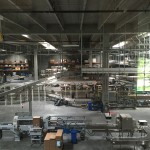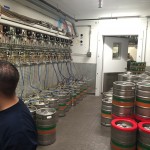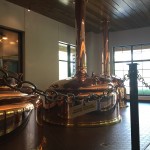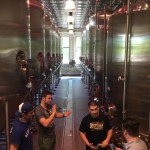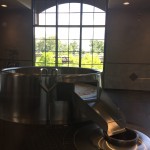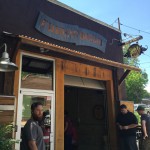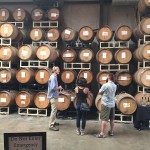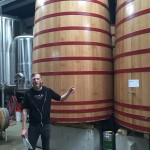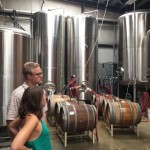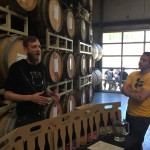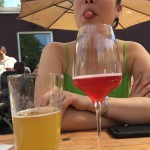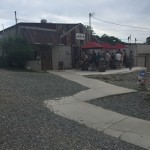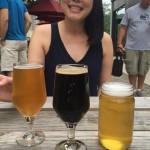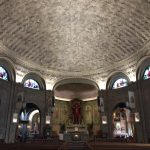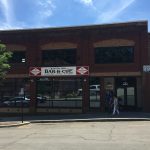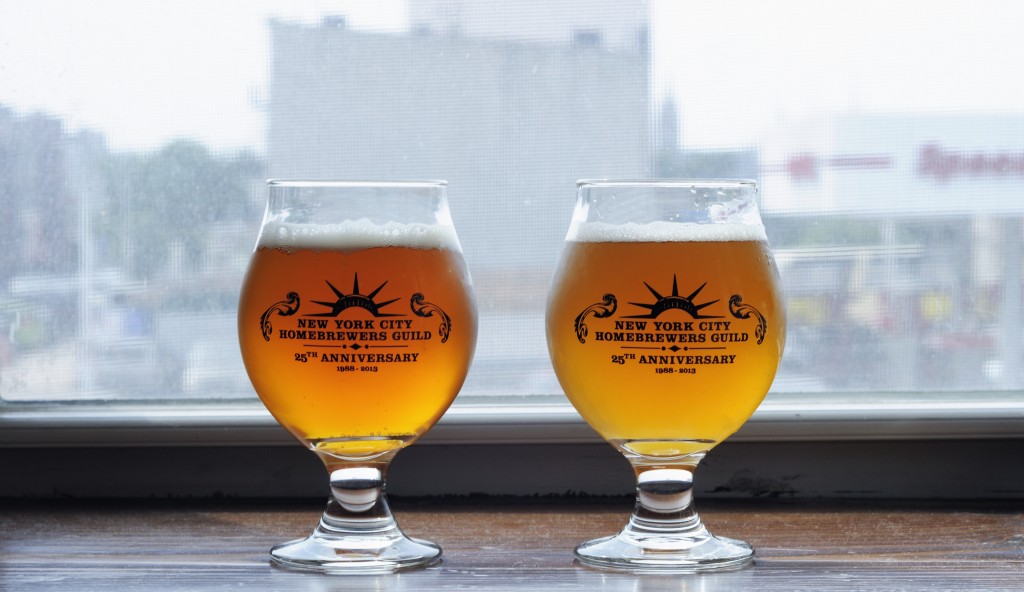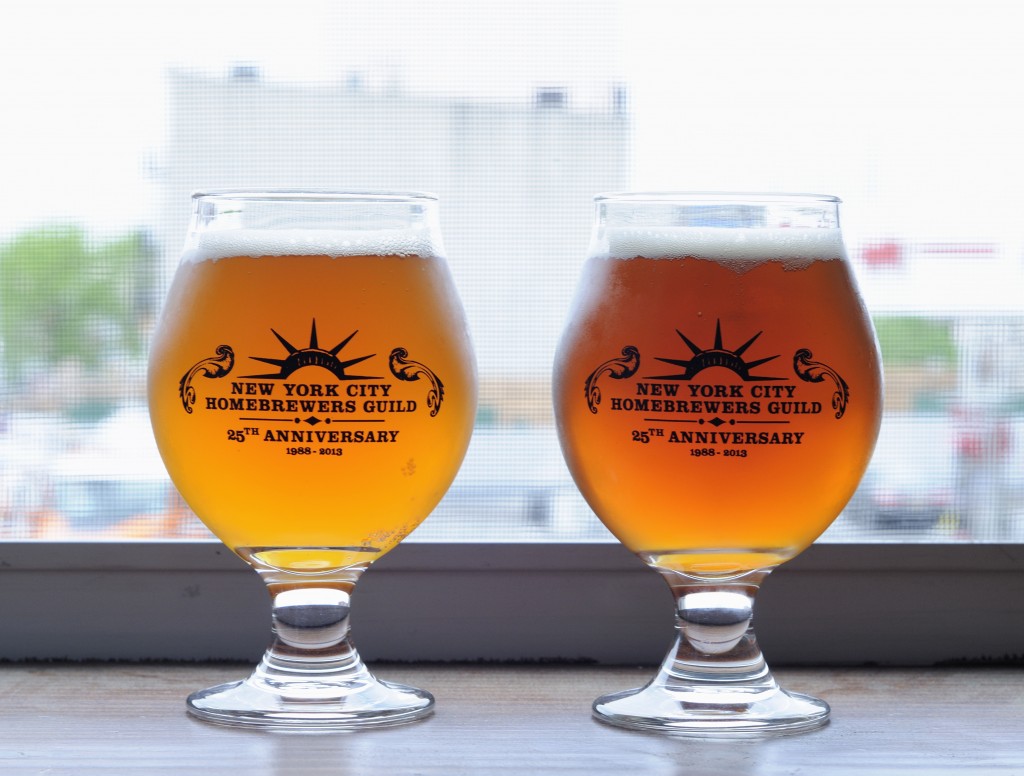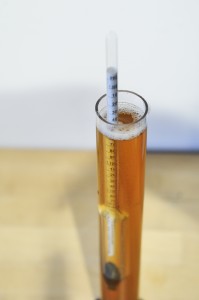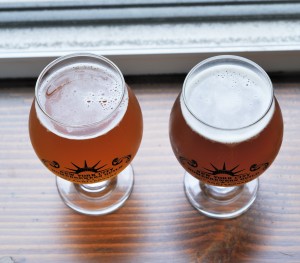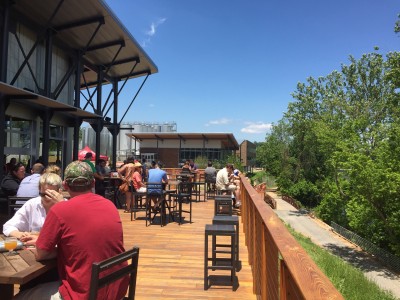
Enjoying drinks on an outdoor deck overlooking the French Broad River? Not a bad way to spend a beautiful spring day.
The hot break on the simmering kettle of craft beer is reaching a fevered pitch and damn near cresting the kettle’s edge. Ten years ago, very few people would have predicted the growth that the craft beer world has experienced— reaching nearly 13% market share with a population of more than 4,000 breweries. The phenomenal growth has resulted in several craft beer capitals scattered throughout the western part of the country—the usual suspects being Denver, Portland, San Francisco, and San Diego. But out on the other side of the country, it’s Asheville, NC, that is holding court as the regional craft beer capital.
While it may have been difficult to anticipate the borderline absurd growth of the craft beer segment (and predict where it’s headed), certain municipalities saw the writing on the wall and positioned themselves to capitalize on the growth. It’s not by chance that Asheville finds itself on the beer pedestal that it currently sits. With progressive policies and economic incentives in place, large, corporate breweries looking for easterly expansion and more efficient distribution naturally gravitated to this region of western North Carolina. A local population already inclined to support the arts set the stage for robust brewery development—bringing in new jobs, tax revenue, and tourism to stoke the flames of the local economy. In a post-industrial America, breweries in Asheville are serving as a new model of manufacturing that can be economically viable and provide additional layers of resiliency to the economic landscape.
This past spring, we (myself, the Homebrew Wife, and the pugs) loaded up the car and spent a few whirlwind days touring around Asheville. The road trip—complete with crazy holiday traffic (e.g. sitting on Staten Island for two hours) and spectacular thunderstorms—made for a challenging drive, but the rewards that awaited us were well worth the effort.
The Breweries
Asheville has a rich craft brewing community, from reliable veterans like Green Man and Highland who have been at it since the 90’s to relatively new start-ups like Wicked Weed and Burial who are generating most of the hype among the hordes of beer geeks. And at a whole different level are the pioneers of craft beer, New Belgium, Sierra Nevada, and Oskar Blues, who have all set up shop with impressive breweries in or near Asheville. While in town, we were able to make our way to a number of these breweries.
As previously mentioned, my day job has recently (and fantastically) collided with my beer fandom as I find myself a part of the design team working on a couple of new projects for Brooklyn Brewery. My awesome clients at Brooklyn Brewery were able to arrange private, behind-the-scenes tours for my wife and me at both New Belgium and Sierra Nevada. The craft beer industry has always prided itself on its comradery and willingness to share information; it was nice to both witness and experience that philosophy firsthand.
New Belgium
New Belgium rolled out the welcome carpet for us, giving us an unbelievably detailed tour of their brewery (still closed to the public at the time of our visit), packaging line, and offices. We were absolutely blown away. The brewery is located on an old industrial site in the River Arts District overlooking the French Broad River. New Belgium meticulously restored the site, turning what was once an environmental liability into a public amenity. The tasting room, which includes an impressive deck that overlooks the river, seamlessly blends indoor and outdoor spaces. Perched in the landscape above the tasting room is the main production brewery, offices, and warehouses. The architecture itself, for the most part, was rigorous and beautiful with an expressive structure, handsome detailing, and warm, pleasing finishes.
- Tasting Room Entrance
- New Belgium Tasting Room
- New Belgium Tasting Room
- New Belgium Tasting Room
- New Belgium Tasting Room
- New Belgium Tasting Room
- Awesome Deck Overlooking the French Broad River
- Awesome Deck Overlooking the French Broad River
- Additional space for imbibing next to the outdoor deck.
- New Belgium Production Brewery
- New Belgium Production Brewery
- New Belgium Brewery Facade
- Restored Creek at New Belgium Brewery
- Restored Creek at New Belgium Brewery
Sierra Nevada
Located about 30 minutes outside Asheville proper in Mills River, Sierra Nevada has built a 200-acre bucolically landscaped campus. While here, it quickly becomes obvious that no expense or idea, no matter how outlandish, was edited from the project program. This brewery has every trick in the book. From a copper-clad pilot plant that literally outshines almost every brewery I’ve ever visited to the actual antique copper-clad production brewery complete with molten basalt tiles, viewing mezzanines, and beautiful wood ceiling fabricated from timbers felled on the site during construction, this brewery has it all. At times, the design felt a bit obtuse and in desperate need of an editor (e.g. copper air ducts), but it was really fun to see what is possible when the sky is the limit. The brewery is in many ways analogous to the Biltmore Estate, the other local landmark of indulgent luxury. Built over a hundred years apart, both compounds feature extravagant materials, lush grounds, and cinematic approaches to the main building. The strongest element of the Sierra campus was the brewery’s “backyard,” which features great drinking patios, gardens, and opportunities for casual recreation, ranging from corn hole to live music.
- Walking up to the brewery from one of their parking lots.
- Walking up to the brewery from one of their parking lots.
- Walking up to the brewery from one of their parking lots.
- Backyard at Sierra Nevada Brewery
- Photovoltaic Awnings in Sierra Nevada’s Parking Lot
- Large Serving Tanks at the Sierra Nevada Brew Pub
- Water Cisterns at Sierra Nevada
- Repurposed Milk Truck in the Backyard
- Patio Bar in Sierra Nevada Backyard
- Large Hydraulic Bi-fold Glass Doors at Sierra Nevada
- Enjoying a Nooner Pilsner on the Sierra Nevada patio.
- Sierra Nevada Patio
- Small-scale Agriculture at Sierra Nevada
- Small-scale Agriculture at Sierra Nevada
- Small-scale Agriculture at Sierra Nevada
- Small-scale Agriculture at Sierra Nevada
- Small-scale Agriculture at Sierra Nevada
- Backyard Stage at Sierra Nevada
- Windows Looking into the Hop Room at Sierra Nevada
- Active Fermentation Display in the Sierra Nevada Gallery
- Sierra Nevada Gallery on the Second Floor of the Brewery
- Brewdeck at Sierra Nevada
- Brewdeck at Sierra Nevada
- Brewdeck at Sierra Nevada
- Brewdeck at Sierra Nevada
- Brewdeck at Sierra Nevada
- Molten basalt tiles were imported from the Czech Republic for the brewery floor.
- Shiny Copper Selfie
- Pipe Corridor
- Water Plant
- Pipes for Expansion of Sierra Nevada’s Lacto Cellar (So They Can Produce More Otra Vez)
- Malt Storage
- Malt Storage
- Super Sacks
- Inside the Sierra Nevada Hop Room
- Inside the Sierra Nevada Hop Room
- Inside the Sierra Nevada Hop Room
- Fermentation Cellar
- Fermentation Cellar
- Fermentation Cellar
- Fermentation Cellar
- Sample of Torpedo Straight Out of the Bright Tanks
- Sierra Nevada Control Room
- Sierra Nevada Lab
- Sierra Nevada Lab
- Sierra Nevada Packaging Hall
- Sierra Nevada Packaging Hall
- Sierra Nevada Packaging Hall
- Sierra Nevada Keg Room
- Sierra Nevada Pilot Brewery
- Sierra Nevada Pilot Brewery Fermentation Cellar
- Sierra Nevada Pilot Brewery Open Fermenters
Wicked Weed
Perhaps the most hyped brewery in North Carolina (and maybe even the South), Wicked Weed is the reigning king of hops and funk in Asheville. We toured their sour beer, barrel-centric Funkatorium and enjoyed a delicious dinner at the brew pub. The beers at both locations were solid, above average beers, but, with all of the hype surrounding the Wicked Weed name, I was hoping to be absolutely blown away. Although the beer was not mind-blowing, both locations had a great vibe and should be a part of any Asheville brewery tour.
- Wicked Weed Funkatorium
- Wicked Weed Funkatorium
- Wicked Weed Funkatorium
- Wicked Weed Funkatorium
- Wicked Weed Funkatorium
- Outdoor Drinking at the Wicked Weed Funkatorium
- Wicked Weed Brew Pub
Burial Beer Co.
Admittedly, I had never heard of Burial prior to arriving in Asheville. We ended up there after very enthusiastic recommendations from our hosts at both New Belgium and Sierra Nevada. The brewery is currently housed in a warehouse space, but there are plans in the works for a second location. The vibe was cool and the side yard provided a comfortable spot for drinking. The beers themselves were outstanding—easily the highlight of the trip, in terms of pure beer enjoyment. Styles veered towards the hoppy and funky, but all were approachable and balanced. I left with the feeling that I had discovered a local favorite—something that I imagine will likely blow up in the near future, if it hasn’t already.
- Burial Beer Co.
- Sloth & Selleck Mural at Burial
- Enjoying the outdoor space at Burial.
Green Man Brewery
We had a couple beers in the dusty outdoor space of Dirty Jack’s, Green Man Brewery’s original tap room (just up the street from Greenmansion, the brewery’s shiny new 20,000 SF expansion). Again, the vibe here was great, laid back, and unpretentious. The beers were also awesome. I was jonesing for a simple session beer, and their Sunseeker Pils hit the spot.
Although beer was our main objective while in Asheville, the city has a ton to offer in terms of entertainment and exploration. Some of the highlights include a vibrant downtown, the surrounding Blue Ridge Mountains, and the Biltmore Estate—an icon of the Gilded Age. Our time in Asheville was short, but we had a great time and plenty of amazing memories.
- Fried-on-demand doughnuts at Hole, just down the street from New Belgium.
- Designed by Rafael Guastavino, the basilica is reputed to have the largest freestanding dome in North America.
- Former home of the Standard Paper Sales Company. Current home to two James Beard Award nominees and their delicious BBQ.
- View of the Biltmore House from the Approach Road overlook.

